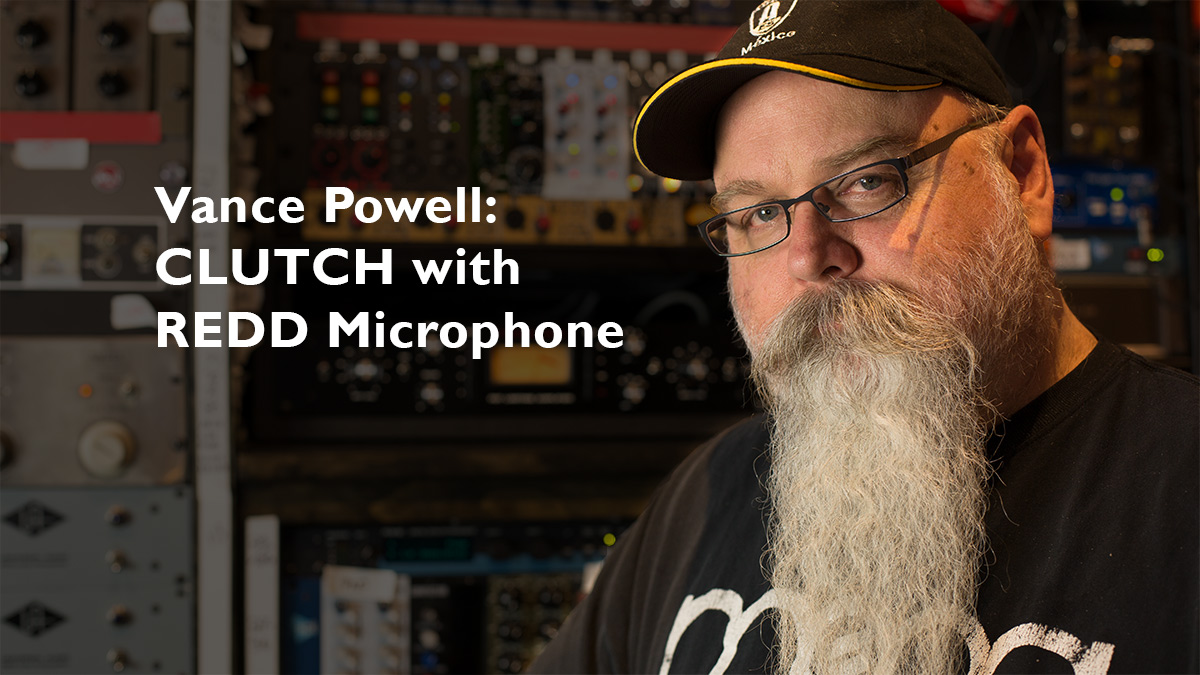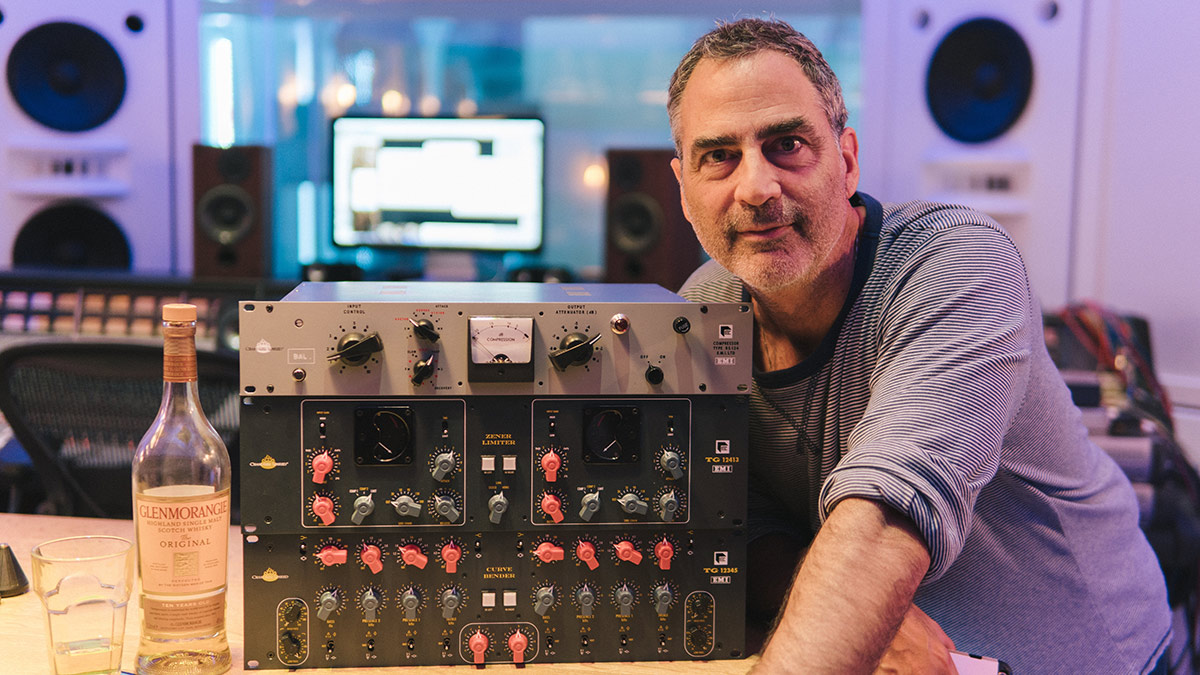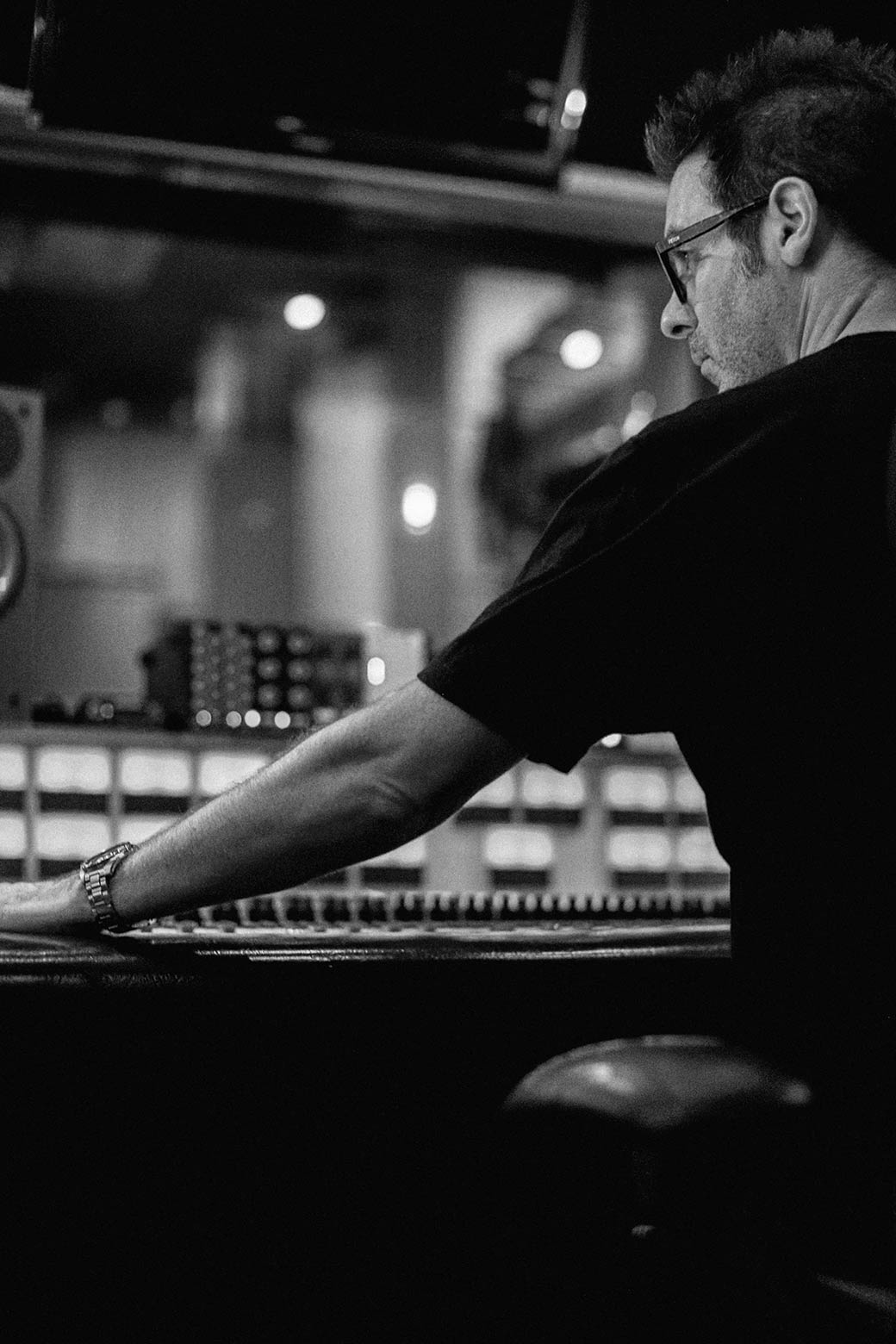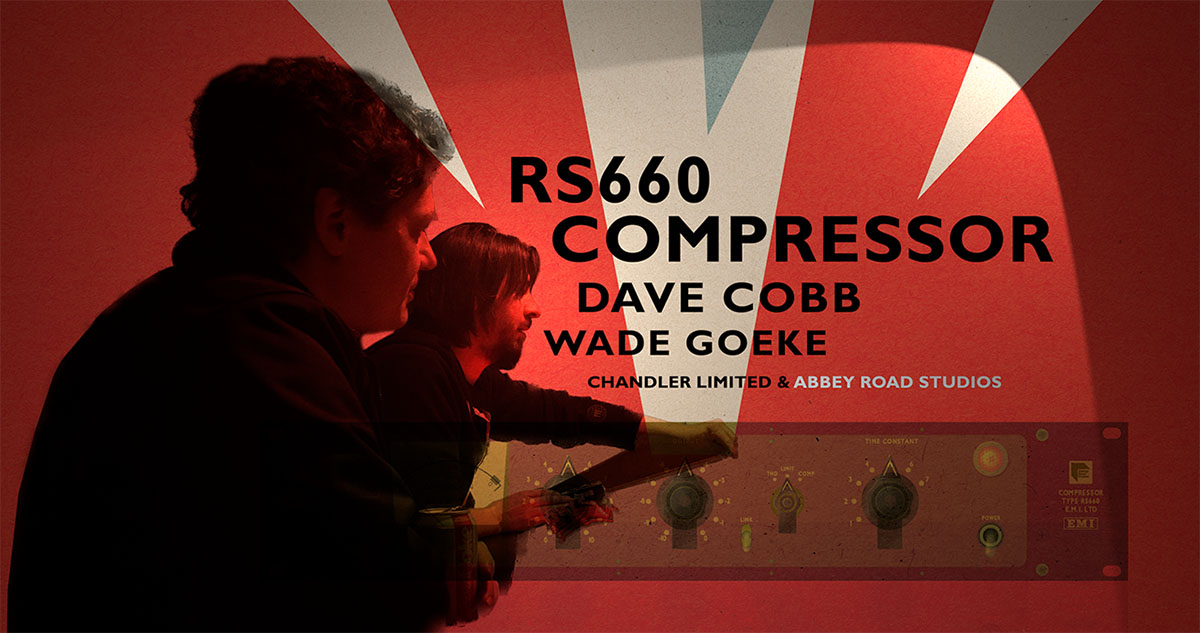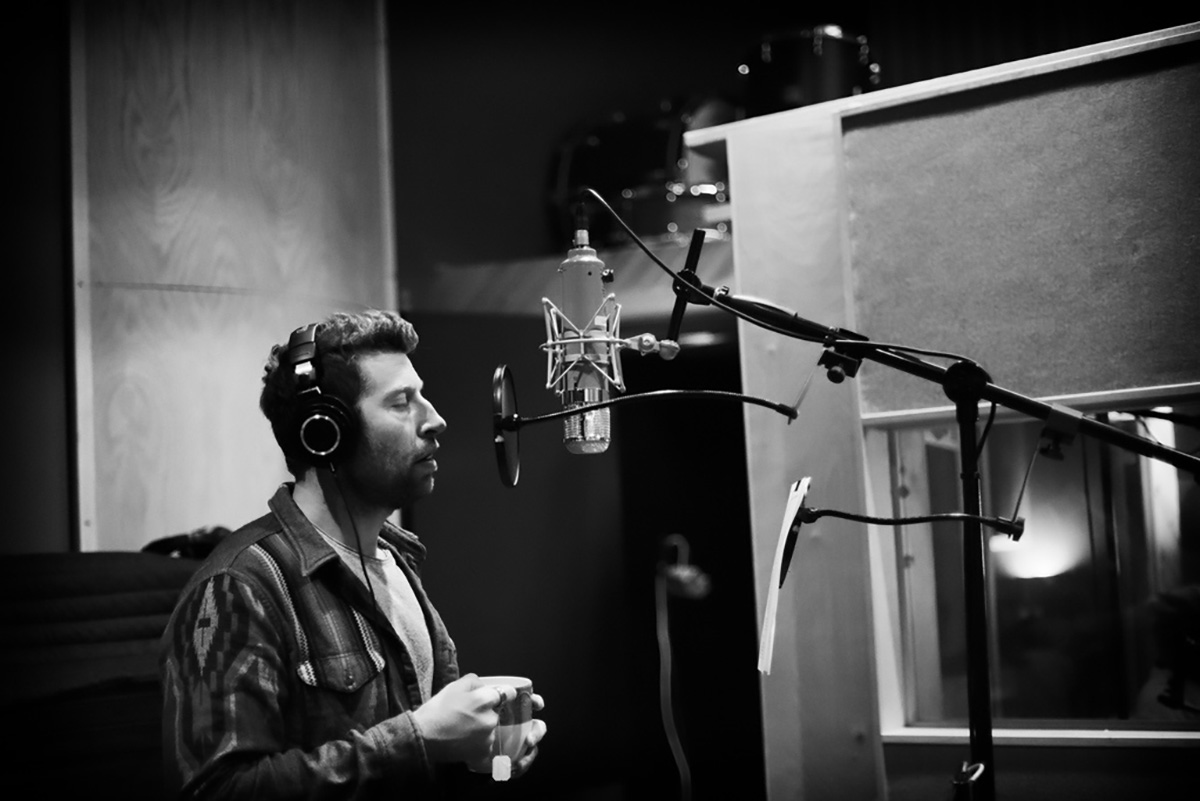Chandler EMI TG12413 Plugin
by: George Shilling
www.recordproduction.com
A few years ago I was lucky enough to use an original EMI TG12345 console which was owned by Mike Hedges – seemingly built to military spec, Mike had acquired and restored it for his private studio. This desk had been used for a number of late 60s and early 70s classics including releases by The Beatles and Pink Floyd, and it didn’t take me long to discover that there was indeed some genuinely magical sonic influence on the sound of these recordings from the console.
Every channel featured a simple limiter with two knobs and no metering. But working up a rough mix I was soon lifting the spring-loaded latching toggle switches and cranking the knobs, working my way along the channels – sheer temptation, a crunchy, juicy warmth that oozed vintage EMI. The music sounded fabulous, and when I stopped the tape, from the silence there was a rapid crescendo of hiss, such was the amount of gain I was driving into the limiters!
The TG console was designed as a replacement for the ageing valve equipment at EMI Studios in the mid 1960s. I’ll skip the Shabby Road jokes, as these old desks had themselves undoubtedly benefited one or two classic recordings…! The contemporary recording engineers loved the Fairchild 660/670 limiter, so the designers attempted a copy, hence the apparently similar switchable release times. However, the end result was quite different in character.
As well as installing one of these on each channel of the console, another version was designed to fit a modular format and include a meter for the mastering department. I recently used some racked examples of these during a mixing session at Abbey Road.
American designer and anglophile Wade Goeke’s Chandler hardware rackmounting version of the EMI limiter caught the attention of Abbey Road, and a partnership was formed with officially endorsed hardware based on EMI designs, resulting in other TG hardware being reissued. Now, they’ve teamed up with a software developer to provide emulations for the ranked masses of Pro Tools users.
The Plugin is offered in TDM (for HD) and Native versions, priced separately. The more expensive TDM installer includes the Native versions.
The package comprises two plugins. Firstly, there is the ‘1969’ version, which attempts to directly recreate the original hardware. The GUI copies the appearance of the mastering version of the hardware. Secondly, there is a ‘2005’ version, where a few aspects of the gain structure and control have been modified, this is closer to the Chandler TG1 hardware reissue.
When I reviewed the TG1, I found its strength to be extreme drum limiting, so of course that was the first test. And… Yes, this soon put a smile on my face too! Using the 2005 version, set the Release to 1, switch to Limit and crank up the input. The most gorgeous pumping, chomping drum emanates! It really rocks, bringing up the room sound in a very exciting way, lending the snare an airy squish. Having a real TG1 box will seem bigger and better, but sonically, this is pretty close, and for a tiny fraction of the cost of the hardware. Of course, there is no hiss or hum, (although perhaps that is part of the magic of analogue!) To avoid the temptation of cranking towards total mush, one trick is to duplicate audio and mix uncompressed and compressed signals together for the best of both. Delay Compensation is useful here for phase accuracy of course, but the TG plugin seems to generate an exceptionally short delay of a mere four samples, or 0.09 milliseconds, so it’s fine for monitoring when tracking.
The main difference between the two versions of the plugin are to do with the gain structure. The authentic 1969 version features a Hold knob which is an effectively input gain, but it as it is adjusted, the resting point of the needle moves, indicating the amount of gain reduction available – as you turn it left the meter rises, showing the moving threshold. On the 2005 version, the Input gain simply drives the limiter harder as you turn it up, and more drive is evident here for more extreme gain reduction. I still frequently found myself with the Input up around 9 though, and the breakup never gets nasty.
Compressing vocals in ‘Compress’ mode adds a honky dryness that won’t suit every voice, and careful choice of Recovery time is required to avoid perverse-sounding gain riding. This can be reduced by running two TG’s in series with differing release times. I wouldn’t say the sound is ‘warm’ on vocals, but there is a certain unmistakably ‘analogue’ character to the tone which is not usually heard with compressor plugins. However, this tone can be subtle unless a reasonable amount of gain reduction is taking place. The Limit and Compress modes are quite different, with Limit employing considerably faster attack and recovery times, as well as a higher ratio, so it is worth experimenting with both modes in any given situation. Attack is quick in Limit mode, but not so fast in Compress, which sometimes splats the front of vocal phrases if pushed. Limit is better for catching otherwise nasty acoustic guitar sprangs and so on. Recovery settings reach ridiculously slow settings in Compress mode, the 10 seconds release for position 6 in Compress mode is super-invisible. It can, however, sometimes just congeal the mix nicely.
There aren’t many truly characterful plugin compressors and limiters. The Universal Audio version of the Fairchild is terrific, but this is different, which makes it an interesting and appealing alternative to that and the Bomb Factory Fairchild. Love it!
Pros
Seemingly accurate modeling, terrific and unique sound character, very ‘analogue’ sounding, fantastic for big drum sounds, appealing GUI.
Cons
Mouse control sometimes a little erratic (straight line/direct jump operation only), slow recovery settings very very slow! No sign of the presets promised in the manual… Not enough initial gain on the 1969 version’s input, but, hey, that’s vintage gear for ya!
—George Shilling

